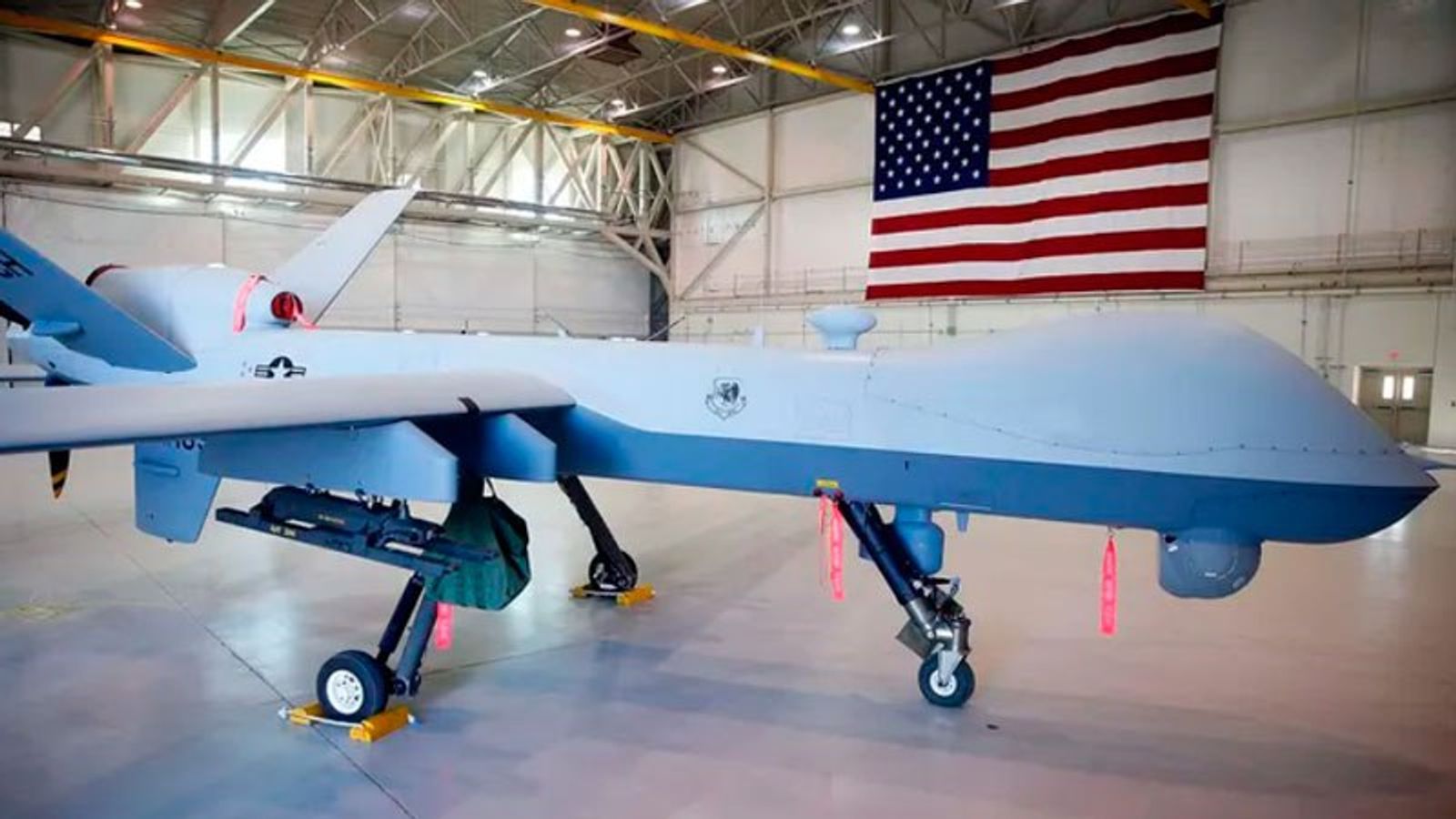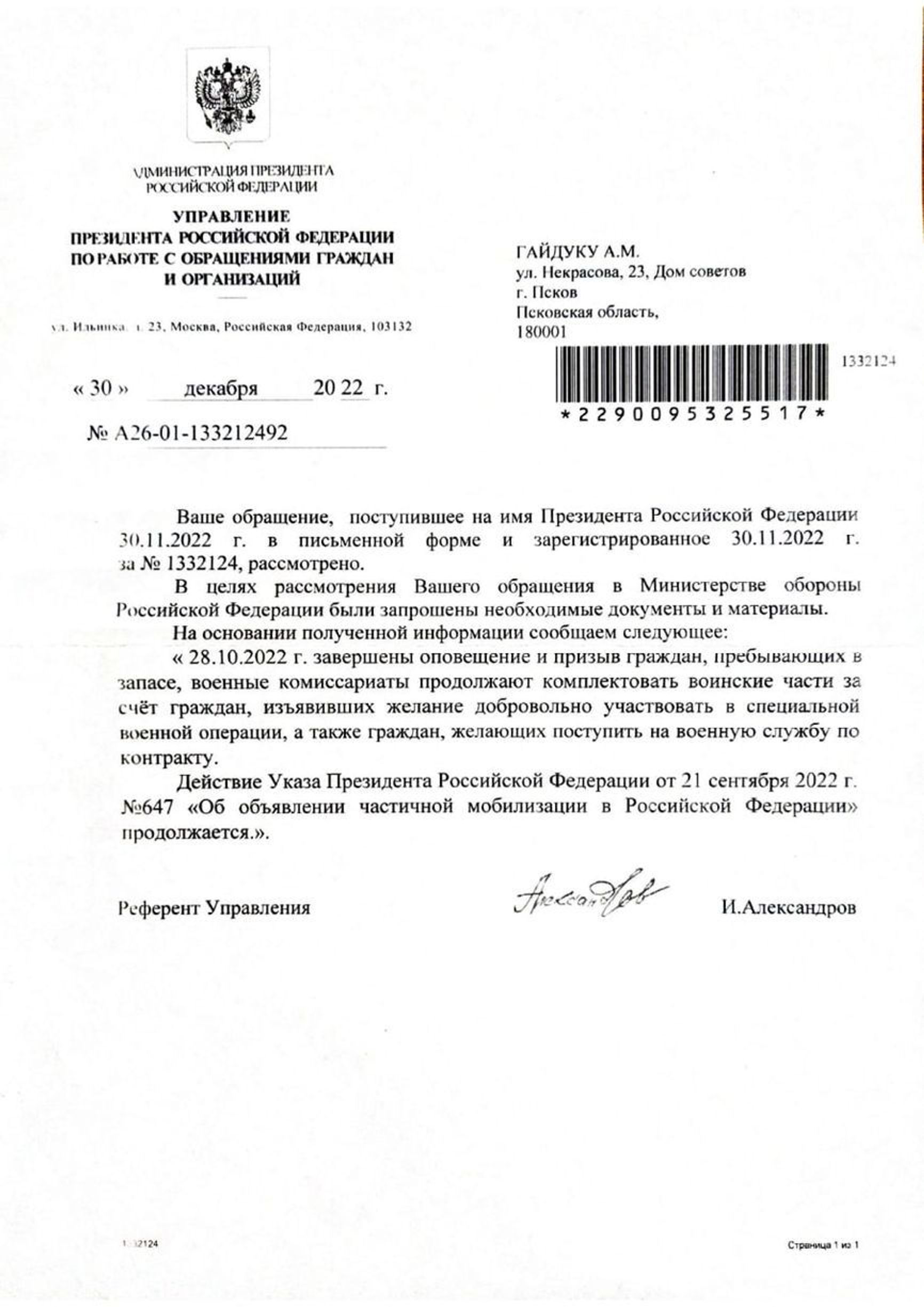
Russian fighter jet collides with US drone over the Black Sea
On 14 March, a Russian Su-27 fighter jet collided with an US MQ-9 Reaper drone and damaged its propeller, causing the US Air Forces to sink the UAV in the Black Sea’s international waters, according to a report from EUCOM, the United States European Command. The report clarified that two Russian Su-27 planes made an “unprofessional intercept” of a US drone.
The incident, EUCOM said, “demonstrated a lack of competence in addition to being unsafe and unprofessional.” The MQ-9 Reaper was conducting routine operations in international airspace when it was intercepted.

The MQ-9 Reaper Unmanned Combat Aerial Vehicle (UCAV)
FOX News quoted a US Defence Department spokesman as saying that both Russian Su-27 fighters involved in the incident in the Black Sea had safely returned to their base in Crimea.
The Russian Defence Ministry, for its part, claimed that the US MQ-9 Reaper drone lost control, fell into the sea and sank.
According to the Russian ministry, the UAV flew with its transponders turned off and violated the airspace use area established for the purpose of air defense. Russia’s MoD claimed that the fighter jets were in the air to identify the intruder and as a result of sharp maneuvering around 9:30 am (Moscow time), the MQ-9 Reaper drone went into uncontrolled flight with loss of altitude and collided with the water’s surface. The MoD added that the Russian fighters did not use any weapons, made no contact with the drone and safely returned to base.
Russia's ambassador to Washington, Anatoly Antonov, was summoned to the US State Department in connection with the downing of the drone. Earlier, White House Strategic Communications Coordinator John Kirby said that the United States intended to continue flights over the Black Sea despite the UAV incident.
This is not the first such incident recorded over the Black Sea. British Defence Secretary Ben Wallace had previously claimed that in late September 2022, a Russian Su-27 fighter fired a missile near a British RC-135W Rivet Joint reconnaissance aircraft patrolling in international airspace over the Black Sea. The Russian side reported a technical malfunction of its fighter jet, claiming the missile was fired by mistake.
The front line
Russian troops are concentrating their main efforts on offensive actions in the Lyman, Bakhmut, Avdiivka, Mariinka and Shakhtar directions, according to a report issued by the Armed Forces of Ukraine (AFU) General Staff on the evening of 14 March. Continuous positional clashes continue near Bakhmut. Fighting is taking place near the villages of Bohdanivka, Khromove and Orikhovo-Vasilivka. A report from the AFU stated that Ukraine was holding all three villages and today reported repelling Russian attacks on them.
Pro-Russian Telegram channel Rybar reported that the Wagner PMC had gained control of the hills near Orikhovo-Vasilivka and Zaliznianske north of Bakhmut, with fighting currently underway.
According to these reports, Wagner PMC assault units have cleared the territory of the Vostokmash building at the Artemivsk Non-Ferrous Metals Processing Plant (Azom) to the north of Bakhmut. The Russian units are now advancing deeper into the enterprise. Wagner units have released a video of the plant.
The quality of Ukraine's armed forces has deteriorated over a year of war due to casualties suffered, and some Ukrainian senior officials doubt the success of the AFU's forthcoming spring counter-offensive, according to a report by The Washington Post citing Ukrainian soldiers and officials in Kyiv who spoke on conditions of anonymity.
According to the newspaper, US and EU officials estimate that up to 120,000 Ukrainian servicemen have been killed or wounded since the start of the full-scale Russian invasion (Kyiv has not officially disclosed the losses). According to the same estimate, the Russian Armed Forces have lost around 200,000 servicemen killed and wounded, noted the WP, even despite the fact that Russia has a large army.
The influx of inexperienced conscripts brought in to compensate for the losses has changed the profile of the Ukrainian forces, says the outlet. There is also a shortage of shells on the front line. All this has led to pessimism among the authorities in Kyiv, according to the WP. If the Ukrainian Armed Forces are unable to carry out the declared counterattack, then a new batch of criticism towards the West is to be expected due to the loss of time with arms deliveries.
Military expert Oleksandr Kovalenko told The Insider that The Washington Post's conclusions are somewhat amateurish, and that the AFU should have no issues in forming a strike capability:
“The anonymous sources are for some reason throwing in either manipulative information or outright fakes. There are several points regarding [combat] readiness that I would like to draw attention to right away. The Washington Post's conclusions are somewhat amateurish, as the total number of mobilised [human] resources to date reaches almost 700 thousand. However, we have to distinguish between four main zones where this resource is deployed.
The first zone is the line of contact. The second zone is the restraint zone, which is divided into several locations, for example, the northern bridgehead on the border with Belarus, the north-eastern bridgehead in the Chernihiv, Sumy and Kharkiv regions that border the Russian Federation, and this south-western location, namely the Odesa region and the border with Transnistria. The resources of the Ukrainian armed forces are concentrated there, fully prepared to conduct combat operations against likely threats from Belarus, Transnistria, as well as the Russian regions of Kursk and Belgorod. In essence, [this is] a combat-ready resource that cannot be used instantly. It has to be in constant combat readiness – the officers, strength of the units and equipment, even the captured T-90 tanks, which are in Ukraine, and they are in the northern bridgehead. Virtually the entire staff is a reinforced company, a T-90 tank company, located on the northern bridgehead. The second zone is in the rear of Ukraine, these are troop units, barracks and training grounds where fighters are stationed after rotation, deployed, and trained. Facilities like these are all along the rear of Ukraine. And the fourth zone is essentially a training zone, the zone of our international partners, where servicemen are trained to operate equipment – for example, the Bradley, Leopard-2 and Challenger [tanks].
The assault infantry units are much larger in number, and there are thousands of soldiers who are undergoing training. And how it all comes together in a question of resource balance. There is a deterrent resource on the line of contact, there is a reserve resource in the rear of Ukraine, there is a semi-active and constrained resource in the locations mentioned, and there is one that is being trained on the territories of our partner countries. From this we can conclude that [Ukraine] has an officer corps, the units are staffed, there’s personnel, equipment and so on. And from this follows the question – what could be the problem in forming a strike capability for assault groups used in a counter-attack? In this case, The Washington Post’s journalists approached the question somewhat biased. They didn’t analyze the situation in its entirety, cherry-picked certain comments instead, which can hardly be called objective.”
Ukraine accuses Russian soldiers of raping 4-year-old girl
The Ukrainian prosecutor's office has accused 12 servicemen of Russia’s 15th separate motorized rifle brigade of sexually assaulting residents of the Brovary region of Kyiv, according to a Reuters report citing prosecution documents. The crimes took place in March 2022, according to the agency. The two servicemen are accused of raping a four-year-old girl and gang-raping her mother at gunpoint and in front of her father.
On March 13, Russian soldiers «in a state of alcoholic intoxication, broke into the yard of the house where a young family lived,» said the prosecutor's office. The father was beaten with a metal pot then forced to kneel while his wife was gang raped. One of the soldiers told the four-year-old girl that he would “make her a woman” before abusing her, documents available to the agency show.
The documents state the two accused were both snipers aged 32 and 28. The older soldier had died, according to the prosecutor's office, while the younger returned to Russia. The younger serviceman’s name, the agency said, was Yevgeny Chernoknizhniy. Reuters found Chernoknizhniy’s number in multiple online databases, with the journalists’ call answered by a man who identified himself as Chernoknizhniy’s brother. «He died. There's no way you can get hold of him,» said the man, crying. «That's all that I can say.» Reuters was unable to independently confirm his assertion.
Draft notices handed out in Russia
Draft summonses have begun being sent out to military registration and enlistment offices in Russia’s Voronezh region. Both the region’s military registration offices and municipal administrations claim that “the only purpose of these events is to update the military registration data in the enlistment offices in Voronezh.” The authorities have also sent out reminders to local employers, informing them of their obligation to send their employees to military draft offices upon request.
In January, Russia’s presidential administration officially confirmed that Vladimir Putin’s mobilization decree, signed last September, is still in effect. Artur Gaiduk, a deputy from the Yabloko party in the Pskov regional legislature, received the confirmation after he sent in a corresponding request. The reply from the Kremlin said that although the conscription of reservists had been completed, the mobilisation decree was still in force:
“On 28.10.2022, notification and conscription of citizens in [military] reserve was completed. Military commissariats are still staffing military units with citizens who have expressed a desire to volunteer for reserve service, as well as citizens who want to enlist for military service under contract.
Presidential Decree No. 647 of 21 September 2022 “On Declaring Partial Mobilisation in the Russian Federation” remains in force.”

Written response from the Kremlin confirming Vladimir Putin's mobilization decree is still in force
In a report to Vladimir Putin on 28 October 2022, Russian Defence Minister Sergei Shoigu claimed that the “partial” mobilisation measures had been completed. No decree to officially end it was issued.